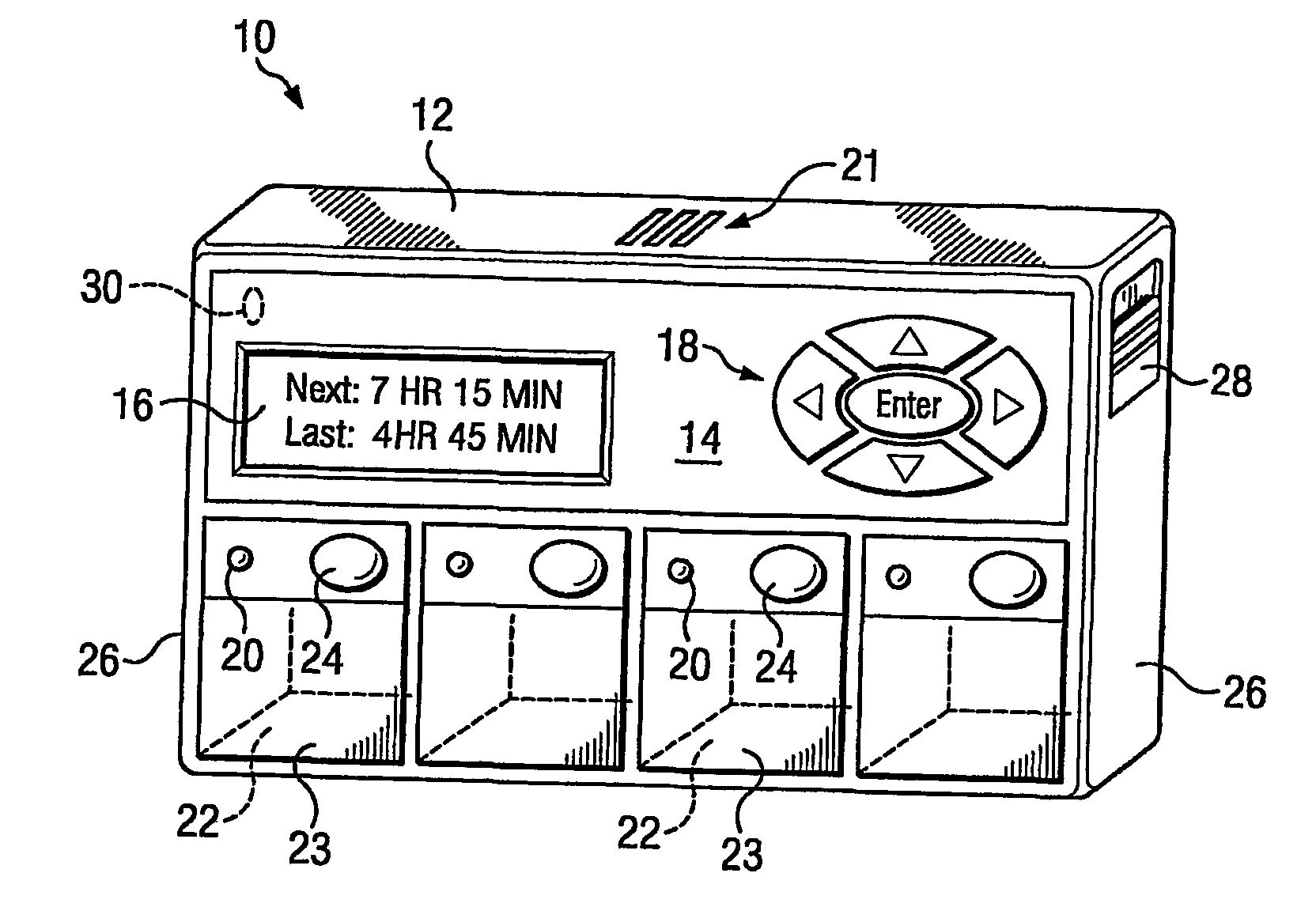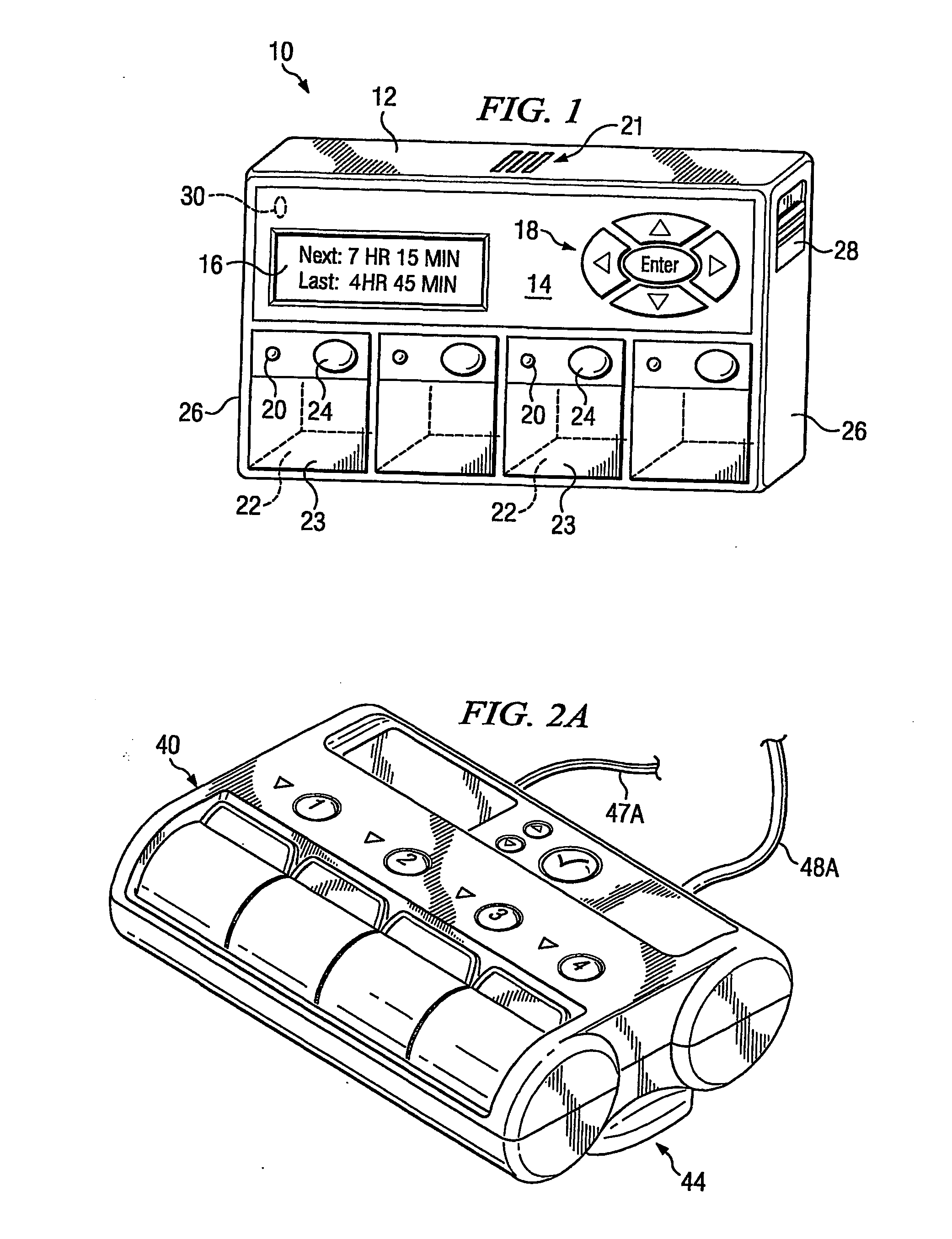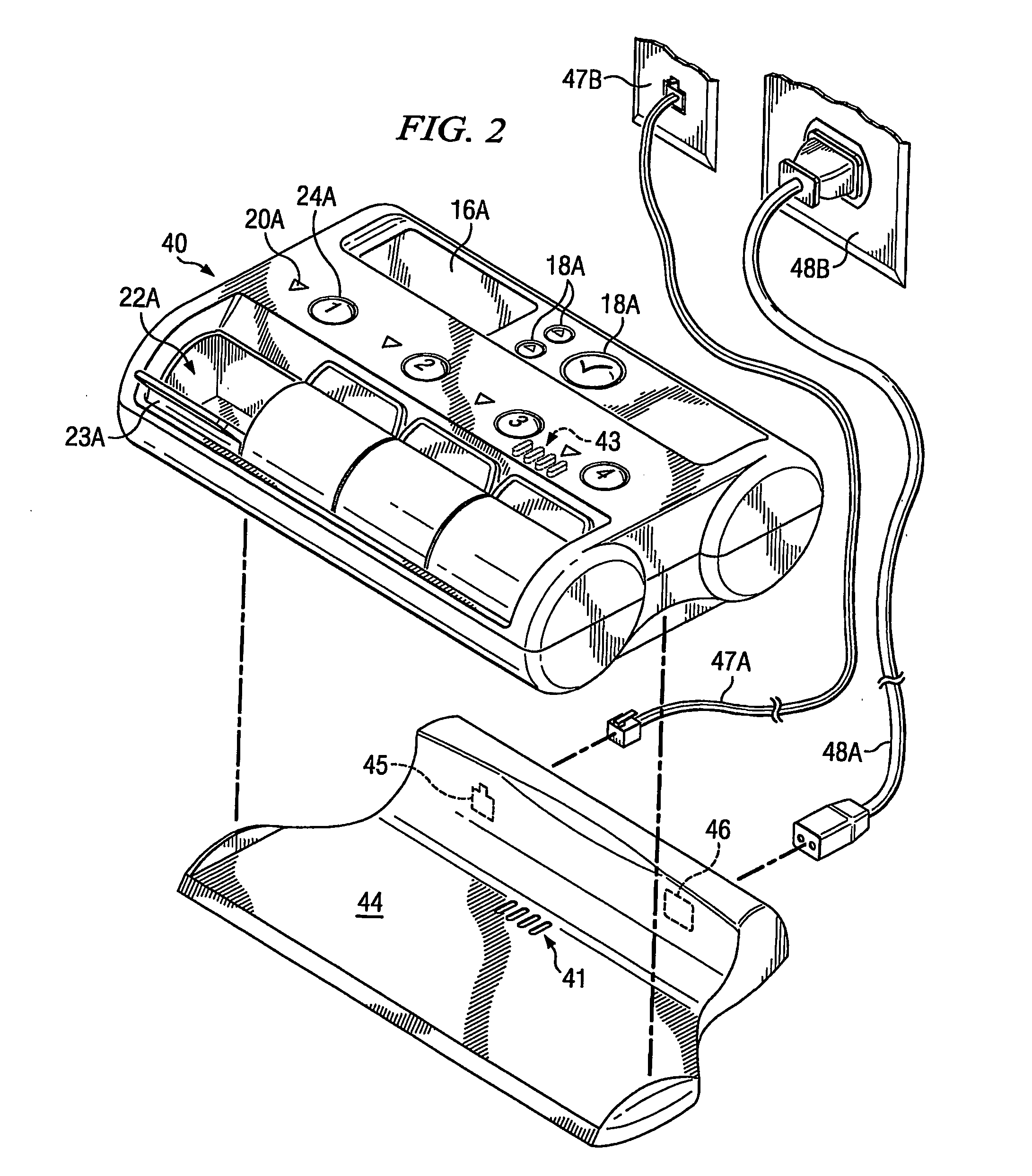Medication compliance device
a technology of medication compliance and compliance device, which is applied in the field of multi-compartment containers, can solve the problems of prescription drug users, patients who fail to comply with physician's directives, and especially problematic non-complian
- Summary
- Abstract
- Description
- Claims
- Application Information
AI Technical Summary
Benefits of technology
Problems solved by technology
Method used
Image
Examples
example 1
Usage Designed for HIV-Positive Patients
[0113] The present invention can be used to remind and help compliance of HIV positive patients taking multiple medications. The highly active anti-retroviral therapy (HAART) is the current mainstay of treating HIV infection, universally reducing viral load and increasing immune function (Autran et al. 1997, Positive effects of combined antiretroviral therapy on CD4+ T cell homeostasis and function in advanced HIV disease. Science, 277(5322), 112-116). Patients on HAART typically take three antiviral medications as well as various antibiotics against opportunistic infections. Each medication is often taken two, three or even four times a day, resulting in over 12 dosages a day. The medical device in the present invention is particularly suited for helping HIV patients to adhere to this complex and long term medication regimen. Additionally, substantial cognitive impairment occurs over time among HIV patients, which further exacerbates remembe...
example 2
Multi-Medications Against Tuberculosis
[0133] In HIV-positive patients, the weakened immune system makes the patient susceptible to various opportunistic infections, and sometimes the patient can develop tuberculosis which is caused by infection with strains of Mycobacterium tuberculosis. A combination of four antibiotics are typically prescribed to maintain control over the infection, and the present medical compliance device is ideal for this purpose.
[0134] For the first two months of therapy, a combination of four drugs are usually prescribed, and a brief description for each drug is as follows.
[0135] Isoniazid (Nydrazid®): One of the most effective antibiotics used to control TB. It is usually taken with a second drug, pyridoxine (Vitamin B6), to help prevent peripheral neuropathy.
[0136] Rifampin (Rifadin®): Another powerful antibiotic needed to manage TB. It can cause various side effects such as nausea, vomiting, diarrhea, rash, liver problems, red-orange discoloration of b...
example 3
Use the Device to Help Control Cardiovascular Conditions
[0142] This device could also be used by users who are taking multi-medications for a particular disease, a condition, or for health maintenance, or a combination of these reasons. For instance, it could be useful for a user with a heart condition taking cardiovascular pills, cholesterol-lowering pills, multi-vitamins and other supplements.
PUM
 Login to View More
Login to View More Abstract
Description
Claims
Application Information
 Login to View More
Login to View More - R&D
- Intellectual Property
- Life Sciences
- Materials
- Tech Scout
- Unparalleled Data Quality
- Higher Quality Content
- 60% Fewer Hallucinations
Browse by: Latest US Patents, China's latest patents, Technical Efficacy Thesaurus, Application Domain, Technology Topic, Popular Technical Reports.
© 2025 PatSnap. All rights reserved.Legal|Privacy policy|Modern Slavery Act Transparency Statement|Sitemap|About US| Contact US: help@patsnap.com



